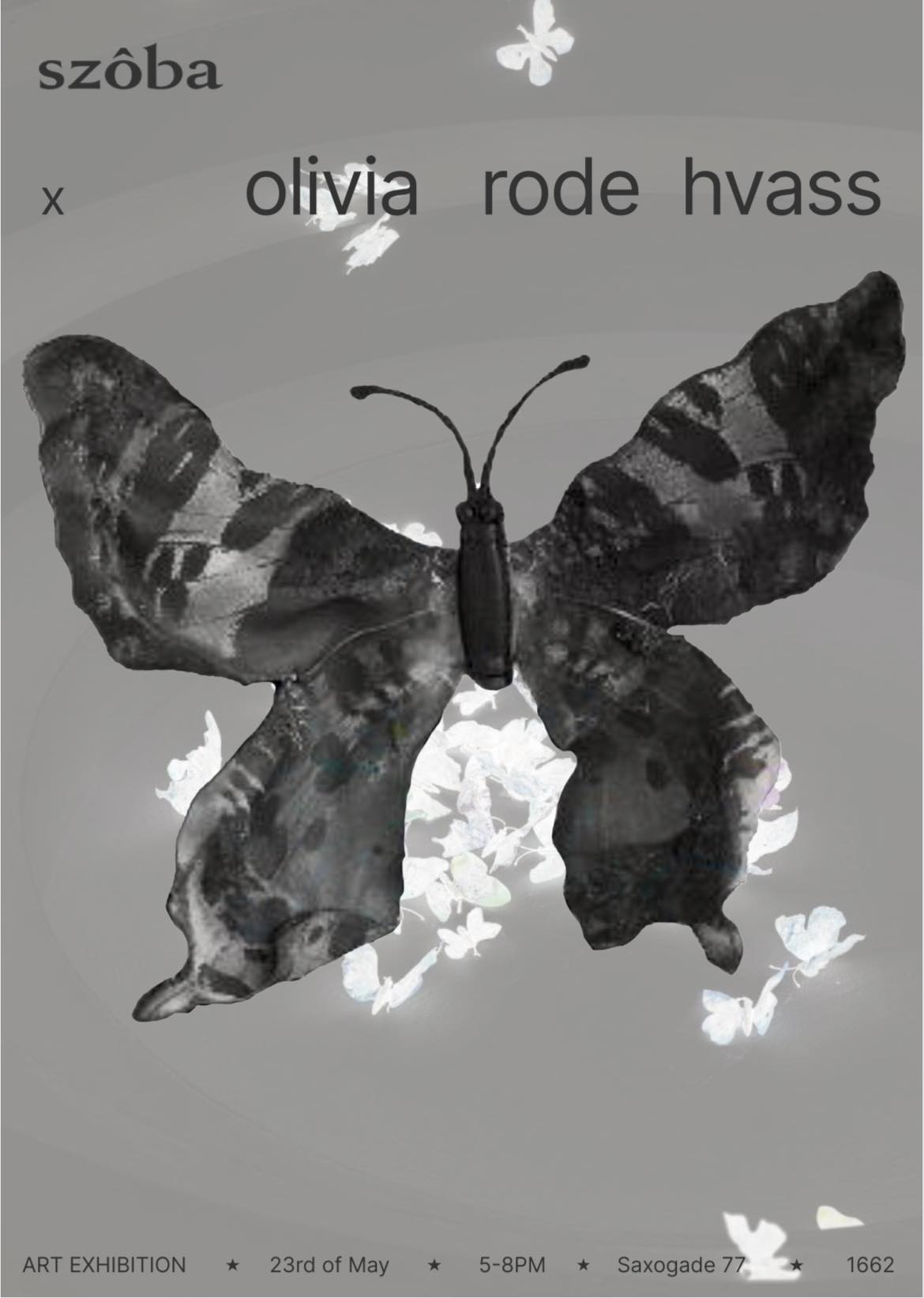May 23, 2024 → June 21, 2024
Tirsdag-fredag: kl. 11:00-18:00
Lørdag, kl. 11:00-15:00
Opening/vernissage:
May 23, 2024, 17:00-20:00
Szôba Store
Saxogade 77, Copenhagen, 1662
https://www.instagram.com/szoba__store/?hl=da&img_index=1
Admission:
Free
IMAGE

Poster, created by Anne Sofie Rørdam
TEXT
When smoke rises from a fire, it can feel cathartic. Especially if you are burning something you wish to get rid of or denounce in your life. Something that should belong to the past, making it easier to move on. But what happens when the fire is gone and only the burned debris is left? Something burnt bears a certain vulnerability, the material clearly shows that it has been exposed to damage. But at the same time there is a strong resilience in the burnt, witnessing the survival of something despite the flames. This is where the artworks of Olivia Rode Hvass take their point of departure – in vulnerable resilience.
The artwork “Burn Down (2023)” implies all these elements; a finely constructed frame of burnt matchsticks surround a drawing of a burning car dissolving into smoke while rolling down, wheels up. Velocity and fire mixed with the fastidious care of the burnt matchstick frame. The artwork asks: what persists in the face of adversity? Olivia’s answers are many: community, sensuality, mythmaking. They all converge in their artworks to pose new ways to navigate the difficulties of the present. In an anachronistic and queer approach to temporality, Olivia mixes symbols and materials from medieval history and consumer- and pop culture and shows how sensibilities from both spheres have the potential to join forces.
Among other references from peasant history in Olivia’s oeuvre is the wooden clog. Supposedly, the word sabotage comes from the French equivalent of clog, ‘sabot’, a common footwear for rural workers. At the dawn of Industrialism, these workers would try to damage the industrial machinery with their clogs to disrupt the new system that posed a risk for peasants and their smaller businesses. Like other wooden objects of use from that time, clogs ended up on the fire when they were broken, and this is how they have been found centuries later; burnt wood transmitting stories of resistance and perseverance.
In Vehicle of obstruction (Let's go) (2023), the wooden clog is front and center in the drawing, but it contains other elements too. It looks like the clog stands on a sea of corn with flames around it. And if you look closely, the burning matchsticks in the clog could also be humans struggling while seemingly being on fire. The details in these works are essential; like the small jewelry accessories hanging from the wooden backbone of the artwork – did you notice them? They are another witness of the intricate equilibrium Olivia creates between soft and the hard, frail and the robust, moving toward dissolving these dichotomies as much as possible.
The butterfly is another detail that appears in the artworks as well as being exhibited around the store as individual works. Also burnt, the butterfly here is a strong symbol of vulnerability in resistance. In (Shoulders) Cry/Lean (2023), it has a central position, almost acting as a figure of Christ on the backdrop of an old piece of wood from which hangs a necklace and carpet fringes; together they make the figure of a cross. With the pastel-coloured plastic pearls on the fringes, the work borders the ironic, while keeping a heartfelt core. In this way, all the components somehow collaborate in these works. Despite their wide range of references, materials, symbolisms, and historical contexts, they balance beauty, trauma, both ironic and deeply felt emotions. In De varme hænder (Hot hands !), 3 (2023), the dark textile work is broken up by a lighter hanging upside down from the fringes of the small tapestry. It reads “be happy” in capital letters, referencing the end-goal of normative happiness in contemporary society which has been the object of queer critique for many years. Opposite this imperative is the analogy of “burn out” that is also implied in the burnt materials, the exposed and worn-out body of work.
And here we are back at the wooden clogs and their symbol of resistance. In the context of exhibiting in a vintage shop like Szôba Store, this is especially pertinent. All throughout the 2010s the clog had a veritable comeback in fashion; textile and weaved materials are also experiencing a spike in popularity; and the medieval influences are prevalent in both contemporary fashion and art. As such, with their practice in relation to fabrics, accessories, reused materials, irony, and multi-temporal kitch, Olivia also creates dialogues with the dynamics of thrift fashion and the resistance that is also inherent in this sphere. This all comes together most prominently in the gorgeous tapestry Soft and Resistant (2021) that Olivia made using a digital jacquard loom. In colors of pink, purple, yellow, and light green, the medieval myth of “the captured unicorn” is turned around, and the creature escapes its chains. As such, the work is a soft resistance in both material and motif that exemplifies mythmaking in the present as a tool for reflection, edification, and reimagination in gloomy times.
The exhibition is curated by Joachim Aagaard Friis